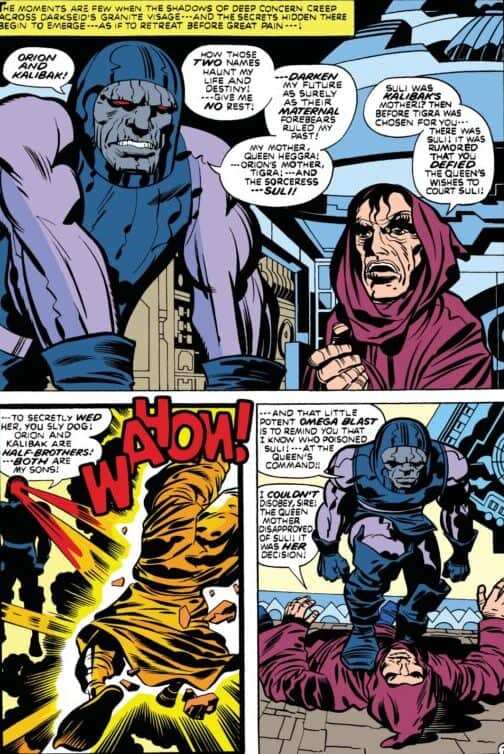***Contains Spoilers***
Jack Kirby’s The Fourth World is an ambitious saga spanning multiple titles, including Superman’s Pal Jimmy Olsen, The Forever People, The New Gods, and Mister Miracle. The series explores the cosmic conflict between the noble New Genesis and the tyrannical Apokolips, spearheaded by the menacing Darkseid, in a battle over the Anti-Life Equation. It introduces iconic elements like the Mother Box, Boom Tubes, and a sprawling pantheon of Fourth World characters. Kirby’s bold storytelling and innovative designs were groundbreaking at the time, though the series has its challenges.
What I really appreciated was Kirby’s vision and the sheer scope of the world he created. You can feel his ambition in every issue, from the introduction of the Anti-Life Equation to the creation of unforgettable characters like Orion, Mister Miracle, and Big Barda. The Forever People #1 was a standout for me, as it introduced not just the Anti-Life Equation but also concepts that would ripple throughout the DC Universe. Similarly, The New Gods gave rich context to the lore of New Genesis and Apokolips, delving into Orion’s story and the eternal struggle between good and evil. Even when the stories felt dated, I couldn’t help but recognize Kirby’s creativity and the influence these ideas have had on modern comics.
Mister Miracle was probably the most enjoyable series of the bunch for me. Its episodic format and focus on Scott Free’s escape artistry made it feel lighter and more fun, though I was surprised by how quickly Scott and Big Barda’s wedding happened—it felt sudden and a little awkward, especially given the era’s reluctance to fully explore romantic relationships. Even so, their dynamic was a highlight, laying the groundwork for future stories about one of DC’s most beloved couples.

That said, I found the series hard to get through at times. Kirby’s writing style is very much a product of its time, with heavy exposition, stilted dialogue, and a lack of subtlety that can feel like a slog to modern readers. This was especially true in the Jimmy Olsen stories, which, while significant for introducing Darkseid and Apokolips, were a challenge for me to enjoy. Darkseid is a shadowy figure pulling the strings in these stories, which makes him feel less imposing than in later depictions. The pacing across all the titles was uneven, and some of the episodic stories lacked the cohesion I wanted from such an ambitious saga.
In the end, I respect The Fourth World for what it accomplished and the doors it opened for cosmic storytelling in comics. I can see how it was groundbreaking for its time, and I would recommend it to those interested in the history of the medium or Kirby’s contributions to comics. However, I wouldn’t revisit it myself; the storytelling style and pacing just didn’t click with me. For those who love foundational works, it’s worth a look, but it’s not one I’d read again. 2 stars.
Feature Image The New Gods #6 cover art by Jack Kirby & Vince Colletta
Keep NewToComics.com running with a donation or shopping with through our affiliates—your support helps maintain the site and continue guiding new readers into the world of comics!


